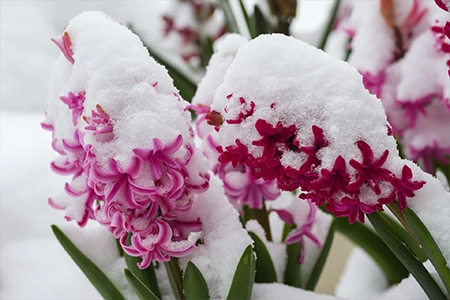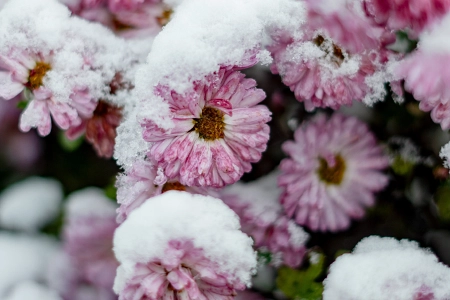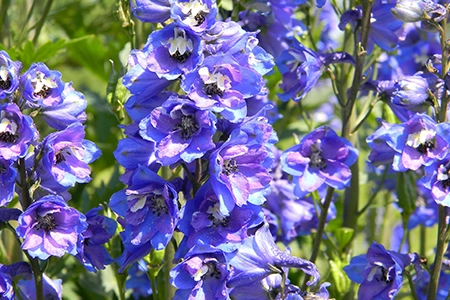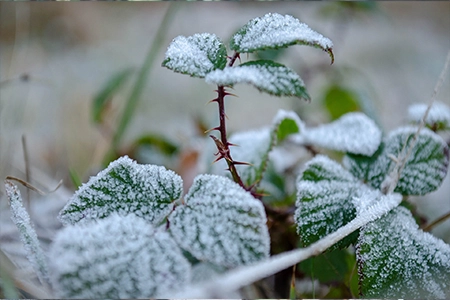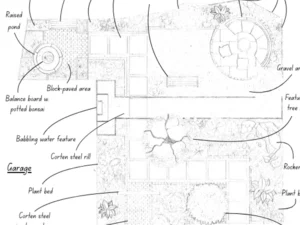Introduction
As the chilly embrace of winter envelops us, gardeners often face the challenge of safeguarding their beloved perennials from the harsh elements. Winter perennial protection becomes a crucial aspect of garden care during these frosty months. In this guide, we’ll explore five effective ways to shield your perennials, ensuring their survival through the cold.
Additionally, we’ll delve into three sensitive perennial types that require extra care and highlight how proper pruning of roses can offer protection during winter.
Mulching Magic
Mulching acts as a saviour for perennials during the frosty winter months. Beyond providing an insulating blanket that shields roots from freezing temperatures, mulch also serves as a moisture preserver. By creating a barrier against temperature fluctuations, it ensures that the ground retains a stable and favourable environment for root systems, fostering their health and resilience. Head to the Contact Us page to find out more.
Cosy Covers
Delicate perennials benefit greatly from this form of winter perennial protection, specifically the embrace of burlap or frost cloths. These covers act as a shield against the harsh elements, notably the biting cold and frost. By creating a barrier, they prevent damage caused by freezing winds, ice accumulation, and the upheaval of soil due to frost heaving. This preservation of the plant’s integrity aids in maintaining its vitality.
Wrap ‘Em Up
Taller or fragile perennials find added winter perennial protection through the method of wrapping them up with burlap or specially designed plant wraps. These wraps offer an additional layer of defence against the rigours of winter. By shielding the foliage and stems, they safeguard the plant’s structural integrity from the damaging effects of harsh winds and heavy snow loads.
Huddle Together
Grouping potted perennials closer to the house or clustering them in the garden creates a microclimate. This strategic arrangement harnesses the residual warmth emitted from buildings or the collective warmth generated by proximity, offering a more sheltered environment. This microclimate helps to stave off the extremes of freezing temperatures, providing a more conducive space for the perennials to endure winter’s chill.
Cold Frame Comfort
Cold frames act as an invaluable asset in any gardener’s attempt to offer their plants some winter perennial protection. These protective structures offer regulated temperatures, shielding plants from frost while permitting adequate light for their survival. By creating a controlled environment, cold frames provide a haven where perennials can thrive despite the harsh outdoor conditions, ensuring their well-being throughout the colder months.
Those in Need of Winter Perennial Protection
Lavender, Rosemary, and Delphiniums are notably sensitive to cold weather conditions and may struggle when temperatures drop. Here’s an elaboration on their sensitivities and how to protect them:
Lavender (Lavendula)
Lavender, prized for its fragrant blooms and aromatic foliage, is native to regions with mild winters. In colder climates, especially during freezing temperatures, Lavender faces the risk of frost damage. The extreme cold can cause the plant to become brittle and susceptible to dieback. To aid its winter survival, it’s crucial to offer Lavender extra protection. Applying a layer of mulch around its base helps insulate the roots, preventing soil temperature fluctuations that can harm the plant. Additionally, covering Lavender with a frost cloth or burlap during harsh winter spells shields it from freezing winds and frost, safeguarding its delicate structure.
Rosemary (Rosmarinus Officinalis)
Rosemary, known for its culinary use and aromatic foliage, is another perennial sensitive to severe cold. In freezing temperatures, Rosemary can suffer from frost damage, resulting in browning or dieback of its tender stems. To support its winter survival, providing a protective layer of mulch around the base helps regulate soil temperature and retain moisture. Covering Rosemary plants with burlap or frost cloth during cold snaps shields them from frost and chilling winds, preserving their vitality.
Delphiniums (Delphinium)
Delphiniums, cherished for their stunning spires of colourful blooms, are often sensitive to freezing temperatures. These perennials can struggle in harsh winter conditions, especially if exposed to prolonged freezing temperatures or icy winds. Offering extra protection to Delphiniums is crucial for their winter survival. Mulching around the base of the plants helps insulate the roots and stabilize soil temperatures. Covering them with burlap or frost cloth shields them from freezing winds and frost, preventing damage to the tender foliage and stems.
Roses and Winter Pruning
A crucial practice that not only enhances their appearance but also safeguards their health through the colder months. Here’s a more comprehensive insight into the significance of winter pruning for roses:
Protection from Winter Damage
Pruning roses in late fall or early winter helps fortify them against potential damage during the harsh winter season. Trimming long canes, particularly those susceptible to whipping in strong winds, reduces the risk of wind damage. By shortening these canes, the plant is less prone to being rocked and broken by winter gusts, safeguarding its structural integrity.
Mitigation of Disease and Infections
Removing dead, diseased, or damaged wood through pruning is crucial in preventing the spread of fungal infections and diseases within the rose bushes. Dead or diseased canes can serve as entry points for pathogens, leading to the decline of the plant’s health. Proper pruning eliminates these potential sources of infection, fostering a healthier environment for the roses. Head to the Contact Us page to find out more.
Stimulation of New Growth
Proper winter pruning stimulates new, healthy growth in roses. By strategically trimming back select branches, the plant is encouraged to channel its energy into developing fresh shoots and blooms. This new growth is essential for the overall vitality of the rose bush and aids in enduring the challenges of the cold season.
Enhancement of Air Circulation and Light Penetration
Pruning helps in opening up the centre of the rose bush, improving air circulation and allowing better penetration of sunlight. Increased airflow reduces the risk of moisture buildup, which can lead to fungal diseases. Additionally, better light penetration promotes healthier growth and more robust blooms.
Optimal Pruning Techniques
When pruning roses in winter, use clean, sharp tools to make precise cuts at a 45-degree angle, about ¼ inch above an outward-facing bud. Remove any crossing or rubbing branches and thin out the centre of the bush to encourage airflow. Ensure to sterilize your pruning tools between cuts, especially when moving between different rose bushes, to prevent the spread of diseases. Head to the Contact Us page to find out more.
To find out more information on the pruning and care of roses during the winter period, read our blog that focuses specifically on the care of roses.
Conclusion
Winter perennial protection is a gardener’s shield against the icy grip of winter. By employing mulching, covers, wraps, strategic grouping, and utilizing cold frames, gardeners can safeguard their perennial treasures. Understanding the sensitivity of certain perennials to cold and offering them tailored protection is essential.
Furthermore, the careful pruning of roses in preparation for winter is a proactive measure to ensure their resilience. With these methods, you can fortify your garden against winter’s chill and set the stage for a vibrant spring revival. Head to the Contact Us page to find out more.
References

